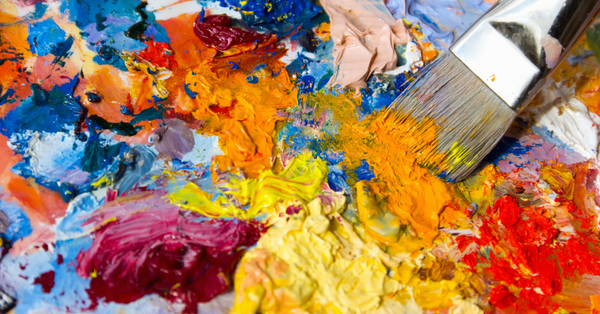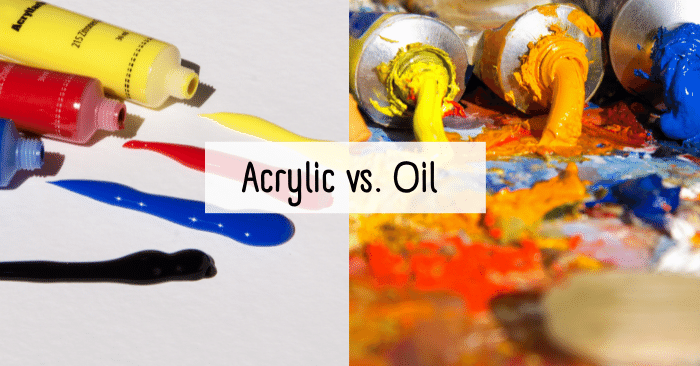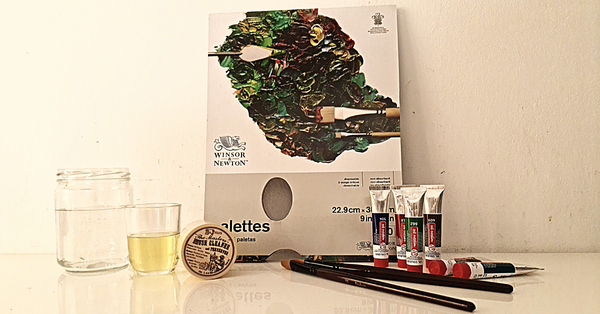
Oil painting can be a beautiful and fun way to express yourself – it can also be incredibly messy! Cleaning your oil paint brushes properly is key to keep your paintings looking their best. Brushes that are poorly taken care of not only don’t last as long but can be a giant pain to clean once the paint dries on them, and if you’re replacing them every other time then your wallet is sure to take an unnecessary hit!
Cleaning oil paint brushes can be a bit tricky, but with this guide, we’ll take you through the ways to properly clean and store your brushes so they last a long time!
TABLE OF CONTENTS
- Natural vs Synthetic Brushes
- How Often Should You Clean Your Oil Paint Brushes?
- What’s the Best Way to Clean Oil Paint Brushes Between Colors?
- What’s the Best Oil Paint Brush Cleaner?
- How to Clean Dried On Paint Off Your Brushes
- Disposing of Oil Water Waste Responsibly
- How to Store Your Brushes After You Clean Them
- How Do You Clean Oil Paint Brushes Without Paint Thinner?
Natural vs Synthetic Brushes
Knowing which type of paint brushes you have—natural or synthetic—is important when it comes to cleaning them the right way. Natural paint brushes require special care and attention in order to keep them in great condition for many years, whereas synthetic ones don’t need as much TLC. So if you want to keep your paintbrush collection pristine, some slight detective work is needed before you reach for the cleaning supplies.
Natural Paint Brushes
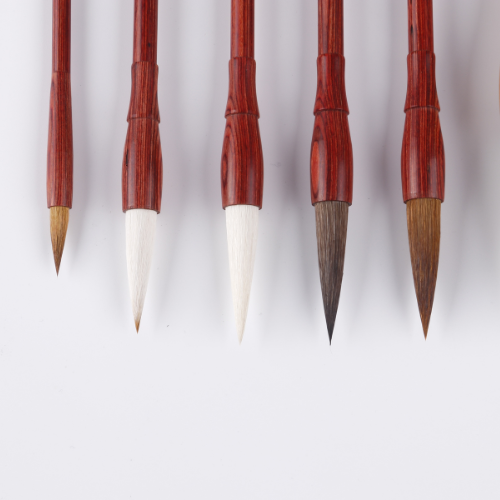
Natural paint brushes are typically made of sable or hog hair and because of this, require more care when cleaning. These natural paint brushes should be washed carefully with a gentle soap (an artist brush cleaner is the best choice). You must always be sure to get out any pigment or it can stiffen the hairs of the brushes over time.
For oil painting, natural brushes tend to be the favorite (especially of professional artists) because they have better paint pick-up (you dip your brush in the paint less frequently) and reputedly offer a better overall painting experience. They also tend to be more durable than synthetic brushes, so you’ll find you won’t need to replace them as often.
Synthetic Paint Brushes
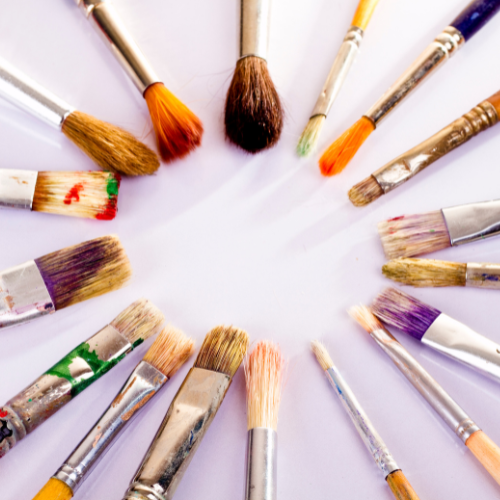
On the other hand, synthetic paintbrushes are lower maintenance in terms of upkeep as they don’t necessarily need to be washed in a special cleaner (although it is advisable!) – some mild soap or baby shampoo and water will do the trick! But you still need to take special care when washing these paintbrushes and make sure that all paint is removed or else it can become sticky over time.
Regardless of which type you opt for, it’s important to ensure that you clean your paint brush between coats to ensure the longevity and durability of your brush.
How Often Should You Clean Your Oil Paint Brushes?
Ideally, you should clean your brushes after each painting session. This will keep your brushes in the best condition and they’ll last longer. However, if you’re short on time or if the paint isn’t too thick, you can clean them at the end of the day.
No matter your brush type, however, you should try to get excess paint off the brush by wiping it off with a towel or cloth before cleaning.
What’s the Best Way to Clean Oil Paint Brushes Between Colors?
It’s best to use a solvent for cleaning your paintbrushes between colors. Using an odorless mineral spirit can remove the most amount of paint in the shortest amount of time. Just add a few dabs in your jar of water to get most of the color out of the bristles.
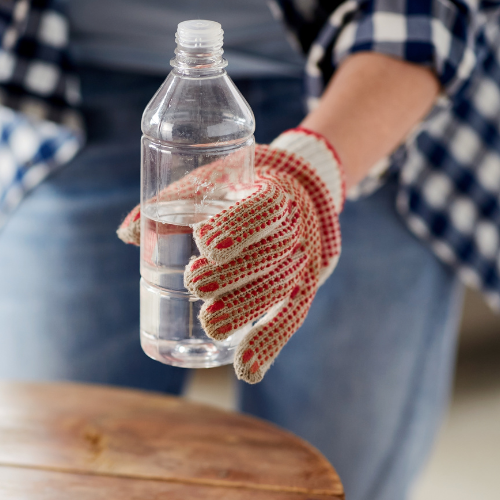
While both white spirit & turpentine can be used in a pinch, an odourless spirit like Gamsol is a superior choice. The advantage of using solvents like these is that they do not contain harmful chemicals that can damage your brushes and they’re relatively inexpensive. They’re also far more environmentally-friendly.
Gamsol is readily biodegradable and contains no Hazardous Air Pollutants or Ozone Depleting Compounds. Gamsol is also odorless and also works as a great paint medium (especially for under painting).
What’s the Best Oil Paint Brush Cleaner?
The best brush cleaner depends on what’s best for you. There are solvents, oils, and brush cleaning products that painters have the option to use. Here are a few different brush cleaning options for your oil paint brushes:
Acetone & Turpentine
You may be tempted to use acetone or turpentine to clean your paint brushes after use. It will work, but it can also damage your paint brushes. Not to mention, it’s incredibly toxic, so if you’re going to use it, make sure you do so in a well ventilated area.
Artist Brush Cleaner
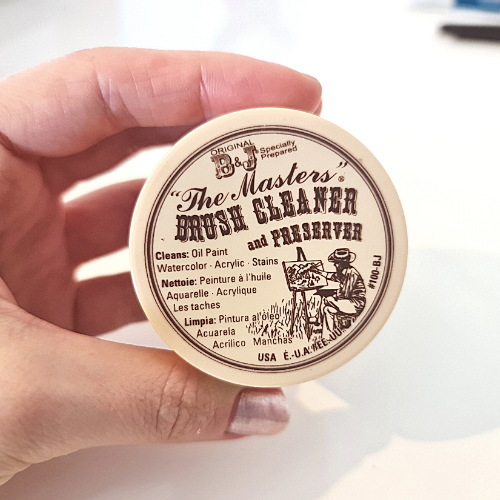
There are some soaps and cleaners made specifically for cleaning paint brushes. This is the best option if you want to avoid any potential damage to your brushes (especially if they are natural paint brushes) and get as much life out of your brushes as possible.
I highly recommend using the “The Masters” Brush Cleaner & Preserver by General Pencil (it’s a favorite of artists everywhere and can be used on both synthetic and natural paint brushes).
How to Use The Masters Brush Cleaner & Preserver
STEP #1 First remove any excess paint from your brush by dabbing it on a paper towel or rag.
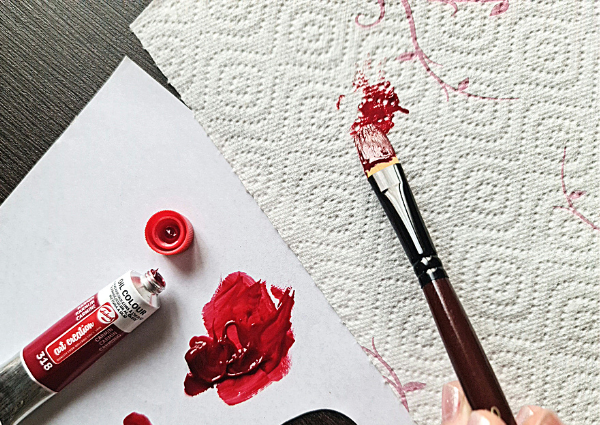
STEP #2 Rinse your brush in warm water.
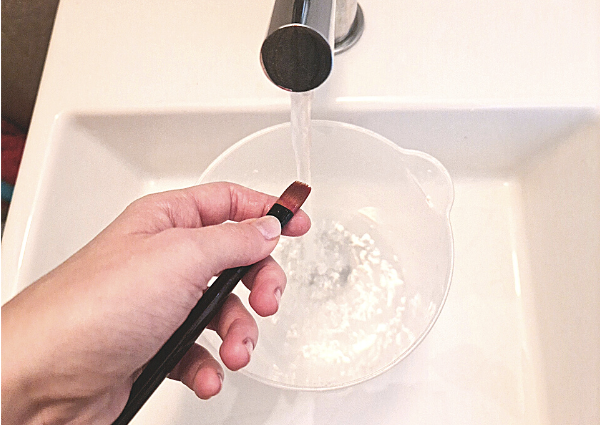
STEP #3 Swirl your wet brush around in the Masters Brush Cleaner and work it into a lather.
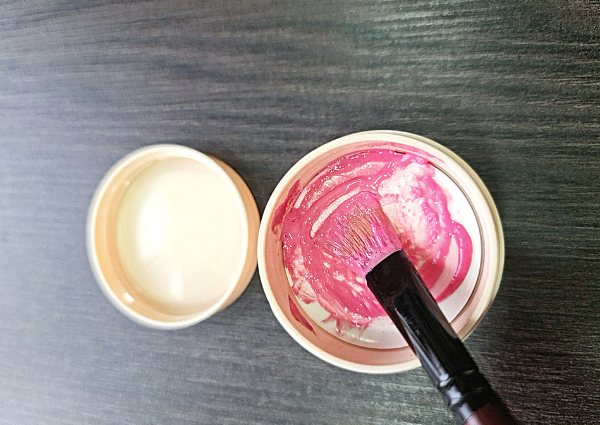
STEP #4 Rinse your brush in clean water and then dab it gently on a clean paper towel.
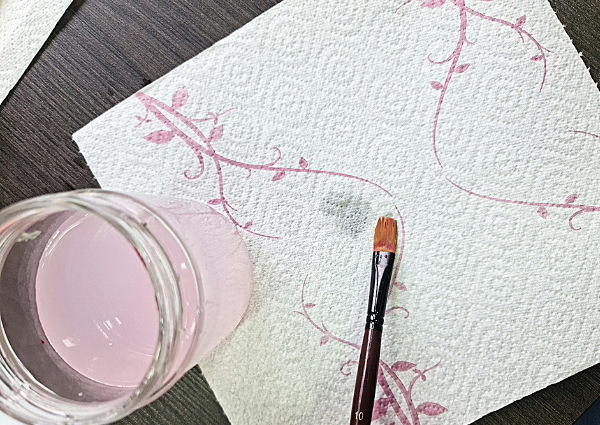
STEP #5 Carefully reshape the brush using your fingers.
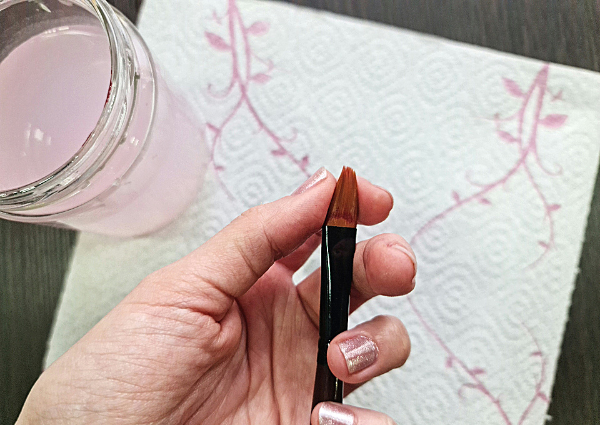
Always dry and store your brushes with the bristles down. This will stop water entering the ferrule and rotting away the glue, and prevent cracking in the brush handle.
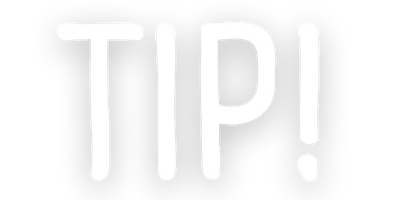
Another great brush cleaner is Windsor & Newton Brush Cleaner and Restorer (anything by Windsor and Newton, in my experience, is guaranteed to be excellent quality). I use this product when I need to get really stubborn dried paint out of my brushes (it happens!) You just soak the heads of your brushes in the cleaner (not beyond the ferrule) and watch the paint dissolve!
If you don’t have access to any specialized brush cleaning products, there are a few other options!
Natural Oils
Canola oil, linseed oil, walnut oil and safflower oil each provide their own unique set of benefits when it comes to paint brush cleanup.
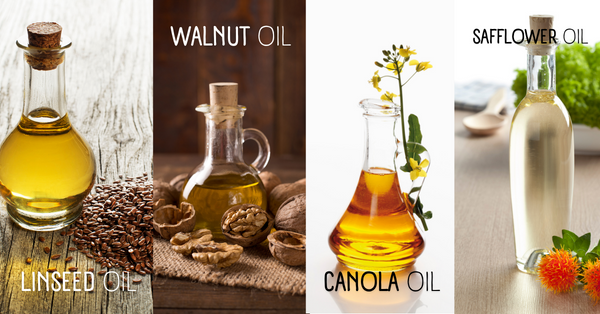
Canola oil is relatively light and odorless, making it the go-to for paint brush maintenance. Walnut oil has stronger antibacterial properties than the former, which are helpful in restoring deteriorated bristles. Lastly, linseed oil is superior for tougher paint jobs as its thicker consistency helps to pull out deeper paint residue from bristles. It also works to condition the brushes and prevent them from becoming brittle.
Pros of Using Natural Oils to Clean Oil Paint Brushes

The pros of using natural oils to clean your brushes is they don’t contain harsh chemicals, which is especially important for the longevity of natural paint brushes. They’re much safer to use and they’re also much more environmentally friendly than solvents. Many oils have unique properties that not just clean your brushes, but also condition and restore them.
Cons of Using Natural Oils to Clean Oil Paint Brushes
The downside is that it typically takes a lot more elbow grease (and patience!) to clean paint brushes with oils instead of a solvent. Also, if you’re not careful, over time oils can leave a residue on your brushes that can mix with the paint. Making sure you wash and rinse your paint brushes with a mild soap (or your brush cleaner) and warm water after cleaning them with oils can help delay any oil build-up on your brushes.

If you’re going to use natural oils to clean your paint brushes, make sure to avoid those that contain Vitamin E or Tocopherols! These ingredients can actually react with paint, leaving your brush covered in a layer of sticky residue. Stick to simple organic oils that don’t have any added vitamins or preservatives.
How to Clean Oil Paint Brushes Using Natural Oils
What you’ll need:
- Linseed oil, Safflower Oil, Walnut Oil, Canola Oil
- Palette or canvas paper
- Sea salt (optional)
STEP #1 Pour a small amount of oil onto your palette paper.
TIP! Sprinkling some sea salt over the palette paper before you start will make the cleaning process easier, as it helps to break up any paint that may get stuck in between the bristles.

STEP #2 Gently swirl your brush around in the oil (covering the bristles in oil). Do this until you see a significant amount of the paint come off onto the paper. Repeat this until all the pigment is gone.
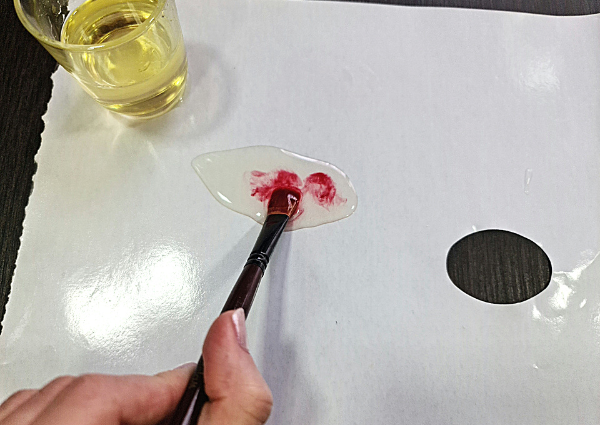
STEP #3 Then rinse your brush thoroughly in warm water and a mild soap. Ideally, you’ll use your brush cleaner for this step. Murphy’s Oil Soap is also very popular – you can pick it up at Walmart pretty cheap or on Amazon. Just make sure not to leave any oil residue on the brush.
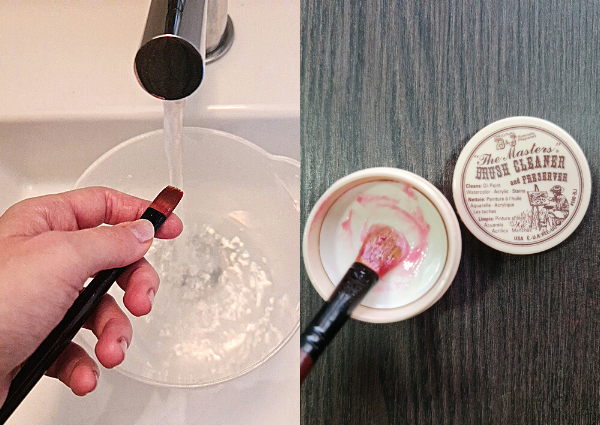
If you don’t have palette paper, use your fingers to massage the oil into the hairs, but be extremely careful not to bend or break the hairs of the brush.
If the paint is really encrusted, first coat the bristles of your paint brushes in the oil and leave them soaking for a while (anywhere from a few minutes to an hour). Once you see the paint is dissolving, wash the brushes off in clear warm water with a mild soap (or better, a brush cleaner) and rinse until the water runs completely clear.

A word of caution – Natural oils are highly flammable, so dispose of any rags or papers with oils extremely carefully.
Baby Oil
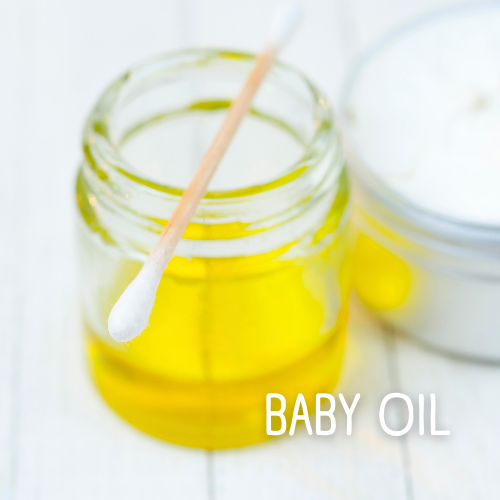
Cleaning oil paint brushes with baby oil is an effective way to preserve brush hairs and maintain the shape of your bristles. Baby oil lubricates the hairs, allowing them to be easily cleaned by removing any oily residue or caked on particles. Additionally, it conditions the bristles so that they remain soft and flexible even after several uses.
Plus, using baby oil for cleaning is cost effective – you can purchase large bottles of it at most retailers in comparison to specialized brush cleaners which can be more expensive. That said, there are a few cons to this method.
Baby oil has a very strong scent, so if you’re sensitive to potent smells it might not be the right choice!

Baby oil is a non-drying oil. If you leave any residue on your brushes it will affect how smoothly and accurately you can apply color with your next painting. To help avoid this, make sure you rinse your brushes well after using baby oil to clean them.
To clean your oil paint brushes with baby oil, all you need is some baby oil, an old cloth or paper towel, and warm water.
STEP #1 Start by wiping off any excess oil paint from your brush onto a clean paper towel or rag.
STEP #2 Once that’s done, carefully pour some of the baby oil onto the bristles and gently massage it in using your fingers. Doing this will remove paint residue and help keep the shape of your brush intact.
STEP # 3 Lastly, rinse off the baby oil extremely well using warm (not hot) water. Use a mild soap to remove any oil residue (a brush cleaner, glycerin soap bar or even a bit of dawn soap will work). Always test out the temperature before rinsing so as to not damage your brush.
It’s as simple as that!
Vinegar

Vinegar is a more natural way to clean your brushes, and actually is one of the most effective cleaners you can use to clean dried paint off of brushes. The best type of vinegar for cleaning oil paint brushes is white distilled vinegar.
This particular type of vinegar has all the acidic power to cut through stubborn, dried-on oil without causing discoloration.
The downside of using vinegar to clean paint brushes is it is highly acidic. It’s effective in removing paint from your brushes, but it can also weaken their bristles and cause them to shed. If you’re an oil painter or someone who uses other artists’ materials regularly, investing in a few quality brush cleaners could save you time and money in the long run.
Also, the smell can be quite overwhelming – so if you’re not into uninvited olfactory surprises, this isn’t the solution for you.
How to Clean Oil Paint Brushes Using Vinegar
STEP #1 Soak your paint brush in white vinegar for an hour.
STEP #2 Simmer vinegar in a saucepan with your brush for several minutes.
STEP #3 Rinse your brushes in clear warm water.

When heated at high temperatures, vinegar can give off harmful fumes due to the presence of acetic acid. Make sure if you clean your brushes with vinegar you do so in a well-ventilated area and avoid breathing in the fumes it gives off. If you are sensitive to smells and fumes, it’s best to use an alternative cleaner, like Masters Brush Cleaner or a natural oil, like linseed oil.
Eco-Solve
Using Eco-Solve is a great alternative to traditional paint thinners. It’s made from processed soybean oil and acts like a paint thinner which means you can use it to clean your brushes.
Eco-solve uses natural solvents so that you can clean your brushes without bad smells or toxic chemicals — that’s always a positive with painting supplies. It is non-toxic, vegan and cruelty-free. It’s also incredibly potent. So much so, if you overuse it, it can damage cheaper brushes.
Additionally, some artists report that it takes longer for eco-solve to work its magic compared to other formulas. It also has quite a strong odor, so it’s advisable to use it in a well-ventilated area. Lastly, it tends to be more expensive than other brush cleaners, so if you’re on a budget it might not be the best choice.
Overall, if smell and safety are important priorities for you in the studio, then Eco-Solve is definitely worth considering.
How to Clean Oil Paint Brushes Using Eco-Solve
STEP #1 Remove any excess paint from your brush with a paper towel or rag.
STEP #2 Pour Eco-Solve into a cup or container – enough to cover the bristles of your brush.
STEP #3 Swirl your brush around in the solvent until the paint is removed. If your paint is really encrusted you may need to soak your brush overnight.
STEP #4 Gently wipe off the excess solvent with a paper towel or rag.
STEP #5 Rinse your brush thoroughly. You can also wash it with a mild soap.
STEP #6 Carefully reshape your brushes before setting them to dry (flat on a paper towel or with the bristles facing down in a brush holder).
How to Clean Dried On Paint Off Your Brushes
While it is recommended to clean your brushes every time to extend their life, sometimes life happens and paint dries before you can clean it off. If you find yourself in that situation you do have some options.
- Vinegar
- Artist Brush Restorer
Using Vinegar to Clean Dried Paint off Brushes
We mentioned earlier that, in a pinch, vinegar can be effective to clean dried paint off brushes.
First you pour the vinegar into a jar and then you put your paint brushes in the jar for about an hour. Letting them soak will help break up the paint. Then you can put that vinegar in a saucepan and heat it up to the point of simmering, let your brushes sit in the simmering vinegar for several minutes.

Afterwards you should wash your brushes with a mild soap and rinse them in clean water, and then let them dry by laying them down flat or with the bristles facing down (a brush storer can be useful for this).
However, this method gives off a strong smell and can even give off harmful fumes (at high temperatures).
Using a Brush Restorer to Clean Dried Paint off Brushes
Investing in a for-purpose brush cleaner and restorer is highly recommendable if you’re a frequent painter or are using high-end brushes. Compared to using vinegar, the process it a lot more simple, effective and less risky (you’re far less likely to damage the bristles of your brushes). Not to mention, your kitchen won’t smell of vinegar!
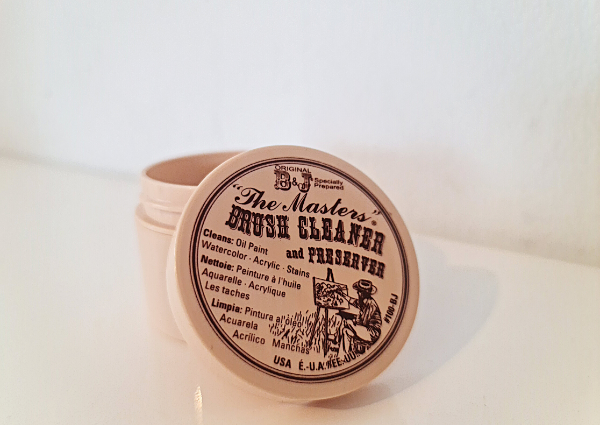
If it’s just for a bit of dried paint, Masters Brush Cleaner will usually do the trick (though you may need to do a little more vigorous cleaning than usual). For really stubborn dried on paint, I highly recommend Winsor & Newton’s Paint Brush Cleaner and Restorer. It’s non-toxic and biodegradable, and gives off minimal odor.
Just soak the bristles of your brush in the cleaner for a few minutes. Once you can see the paint is dissolving, remove your brushes and rinse them well.
Disposing of oil water waste responsibly
Oil based paint is considered hazardous waste and should be disposed of properly. That means you should never wash your brushes in the sink or pour used paint water down the drain, as this could lead to environmental pollution (and a clogged sink!). Instead, if you need water to rinse your brushes, make sure the water is in a container you can easily dispose of.

Depending on where you live will depend on how you get rid of oil water waste. Some states have facilities where you can drop off your containers. There may even be communities where they host events to dispose of hazardous waste. You can always call your local waste or recycling facility to find out more information for your specific community.
In cases where there isn’t a facility nearby, thickening agents like cat litter can be added to the oil paint water making it solid enough to place in a sealed bag and put into a regular trash bin. You can also use a coffee filter to separate the solids from the paint in the water to then dispose of more easily.
How to Store Your Brushes After You Clean Them
Just like makeup brushes you should NEVER store freshly cleaned brushes with the bristles facing up. The water can seep into the ferrule and rot the glue, and it can also get into the handle causing it to crack.
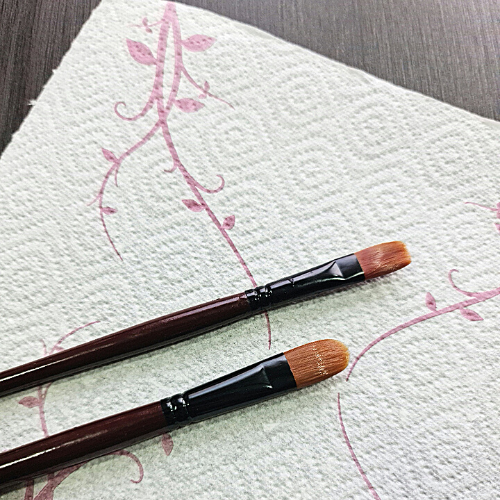
Instead you should lay your brushes flat on a paper towel or better yet, with the bristles facing down. If you decide bristles facing down is the better option, make sure you put the brushes in a dry container with a paper towel or napkin at the bottom.
Also make sure you store them in a shaded area that’s well ventilated and away from direct sunlight. Once dry, your brushes should look almost as good as new.

I highly recommend the Paint Puck brush holder and cleaner if you’re a frequent painter. It allows you to easily dry and store your brushes properly with the bristles facing down.
It also has an attached cup for water, and a specially-designed silicone base that makes it easier to clean your brushes without damaging the bristles, so it’ll help you keep your brushes in good condition.
How Do You Clean Oil Paint Brushes Without Paint Thinner?
Paint thinner can be a literal headache to use. Luckily there are multiple ways to clean oil paint brushes without it. You can use baby oil, linseed oil, dish soap, or a non-toxic solvent like Eco-Solve. We’ve covered multiple ways to clean your brushes without paint thinner in this article.

Linseed Oil
With linseed oil, you’ll use a jar of the oil to dip your brush in and a paper towel or cloth to clean off the excess paint. You’ll repeat the process until the brush is fully clean. For good measure you can rinse the brush with a little soap and water at the end to make sure it’s fully clean.
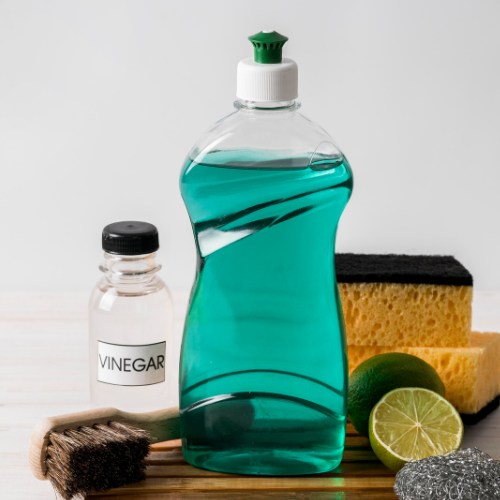
Dish Soap
With dish soap you would eliminate the oil process and just clean the brushes with a little dish soap and a jar of water until the brushes come out clean. While this method does work, you have to be careful how much soap you use, as you can damage the integrity of your brushes. Long term it’s better to use a brush cleaner, especially if you’ve invested in quality brushes!
Key Takeaway
As you can see, there are a few different ways that you can clean your oil paint brushes. Some people prefer to use an artist brush cleaner, like The Masters, while others prefer natural oils or a non-toxic solvent like Eco-Solve for really stubborn paint. You can also use a dish soap like Dawn Soap in a pinch.
Whichever method you choose, make sure that you are cleaning your brushes thoroughly and effectively in order to prolong their life and keep them in good condition. Thanks for reading and happy painting!


